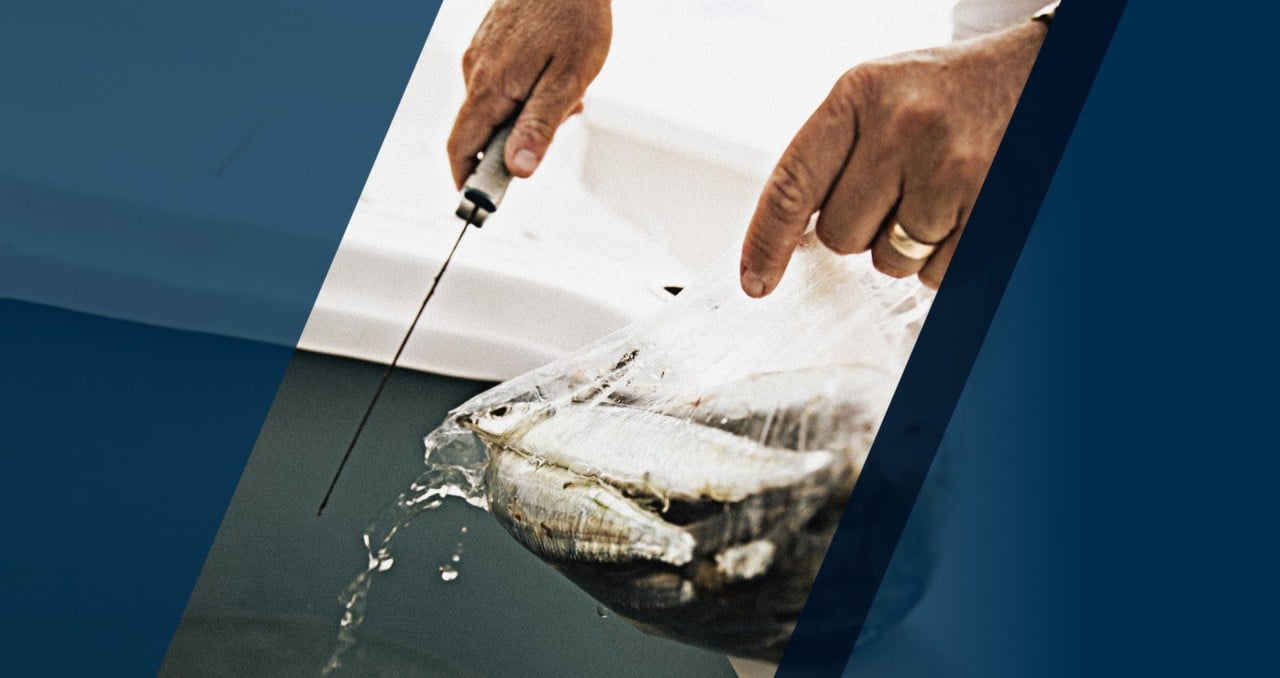Electric fillet knives and fixed-blade fillet knives both have their advantages when it comes time to prepare your catch for cooking. I use both styles. For me, the two primary considerations when choosing the type of knife are the number of fish I am cleaning and the size of the fish.
An electric knife can make cleaning small fish a lot quicker and easier. It’s my preference for filleting big crappie and other large panfish. Often, when I’m cleaning panfish, I’m cleaning a lot of them. I’ll use the electric knife to do most of the work, including zipping right through the ribs, but I’ll still use a fixed-blade knife to remove the rib bones from each fillet. That step could be completed with the electric knife, but I feel that the fixed-blade knife leaves less waste. If I only have a few panfish or crappie, and they’re potentially on the smaller side, I will choose a fixed-blade knife to be as meticulous as possible.
On average, filleting each panfish with an electric knife takes me about 45 to 60 seconds from start to finish, which includes removing a fillet, flipping it over and skinning it, removing the rib bones, washing it off, and repeating the process for the other side. I’ve seen videos of people who do it faster, but I don’t know that I’ll ever be able to do it much more quickly than I do today. An electric knife is definitely a time saver!
A fixed-blade knife tends to be a better choice when filleting a fish that weighs more than about 2 to 3 pounds. In Alaska, I cleaned salmon, Alaskan red snapper (a type of rockfish), lingcod, halibut, arrowtooth flounder and black sea bass. A fixed-blade knife was the best way to go for these species due to their size. The reason for this is, generally, when using an electric knife, the blade is used to cut through the rib bones. That is possible with smaller fish. Once fish reach 3 pounds or so, it becomes more challenging to cut through the bones, which becomes a bigger issue when cleaning a lot of fish. In that situation, it’s easier to cut around the bones to remove the fillet using a fixed-blade knife.
No Bones About It
A fixed-blade knife allows the fillets to be removed from the fish with minimal waste. Making clean cuts close to the bones on the fish is vital to avoid leaving any meat behind. Larger fish will potentially take a bit longer, depending on the fish. For me, I’m not as worried about my speed as I am getting the most meat possible. More importantly, I don’t want to leave any bones in the fillets. Leaving behind bones can be dangerous if someone were to get one lodged in their throat. Also, eating a mess of fish littered with bones or bone fragments will ruin a meal. Take your time to ensure everyone can eat their meal without concern over finding a bone. Also, when rinsing off the fillets, I always run my fingers across the surface to check for bones and remove any that I might have missed.
In the end, knife selection boils down to personal preference. Neither type is right nor wrong. I think most people who clean a lot of fish will benefit from having fixed-blade knives and electric knives at their disposal.




